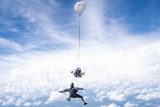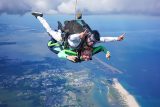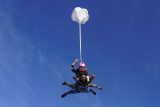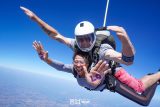Skydiving Gear and Equipment: What You Need to Know
General
Posted by: SKYDIVINGDOTCOM
2 years ago
With all of the innovations in skydiving technology, it can be difficult to keep up with the latest skydiving gear and equipment out there! Especially as a first-time skydiver, you may be curious as to what to expect when you go skydiving in tandem, how the skydiving gear works, and what you’ll need on your big day. To save yourself from the confusion and anticipation of the unknown, let’s go over what equipment is needed for skydiving, how it differs from jumper to jumper, and what you’ll need as a first-time skydiver.
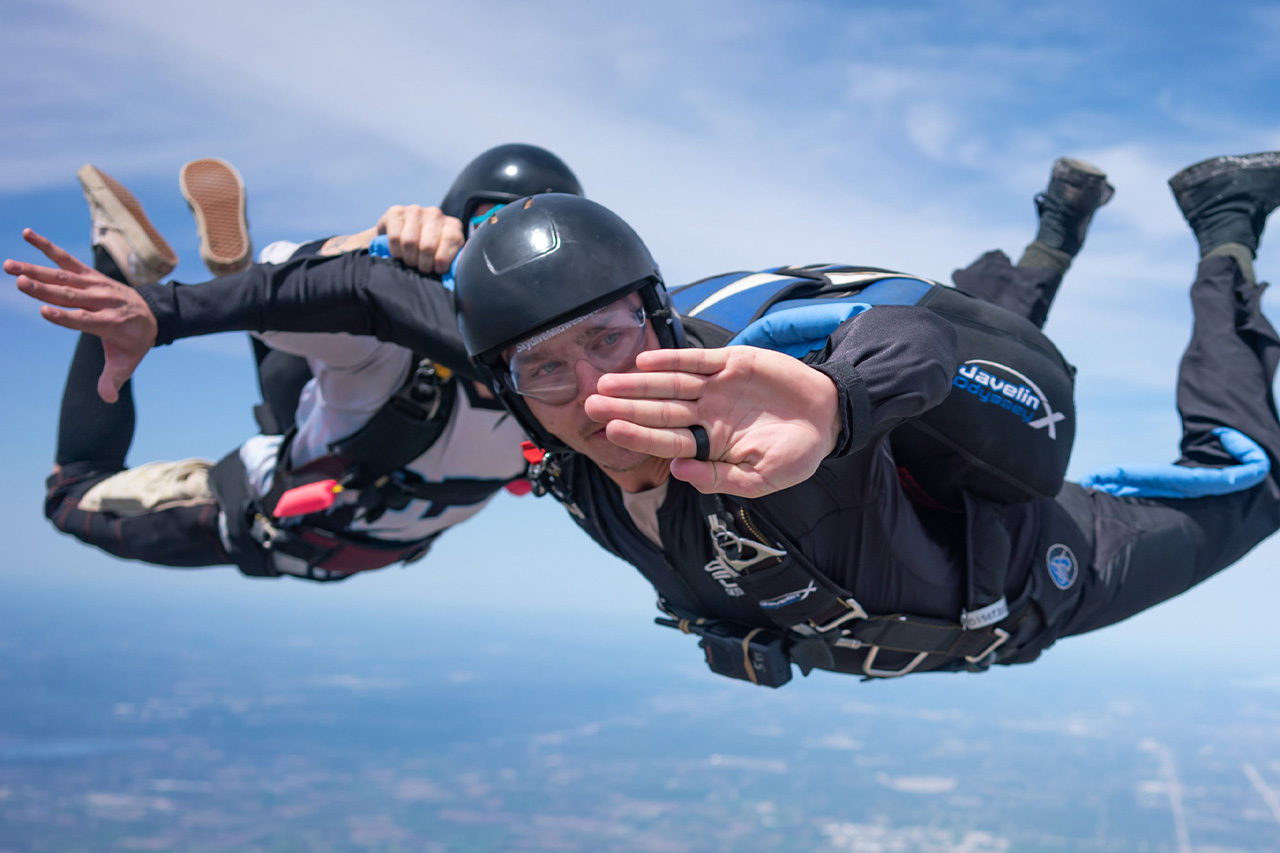
Guide to Skydiving Gear & Equipment
What equipment do you need to go skydiving? Skydiving equipment requirements vary based on if you’re a first-time tandem skydiver, a student learning to skydive all on your own, or an experienced/licensed skydiver, but the basics of the skydiving gear are pretty much the same. Here are the skydiving gear and equipment basics
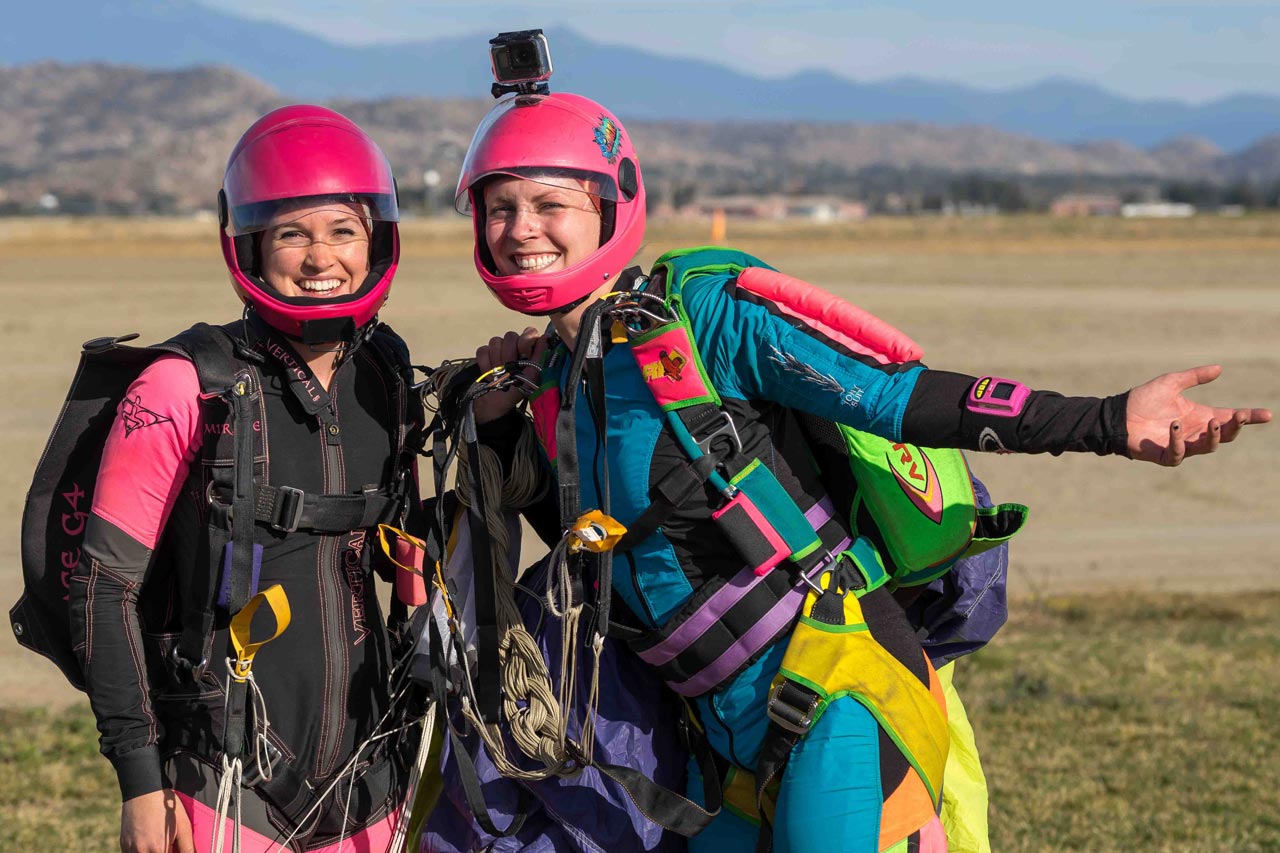
Basic Skydiving Equipment List:
- Parachutes:
There are two types of parachutes for skydiving:- Main Parachute: The main parachute is the primary parachute that is deployed.
- Reserve Parachute: The reserve parachute serves as a backup parachute in the unlikely event that the main parachute malfunctions.
- Container: The container is the backpack-looking thing that holds all of the contents of the parachute equipment.
- AAD: Each skydiving rig is equipped with an Automatic Activation Device (AAD). The AAD is a microprocessor computer sewn within the skydiving rig to initiate the reserve parachute deployment.
- RSL: The Reserve Static Line (RSL) is a lanyard that is in place to initiate the reserve opening sequence and deploy the reserve if necessary.
- Altimeter: The altimeter is a crucial piece of the skydiving gear, as it tracks the altitude that you’re at so that you know when it is time to deploy the parachute. Its sophisticated design uses barometric pressures to calculate altitude. Altimeters can be analog or digital.
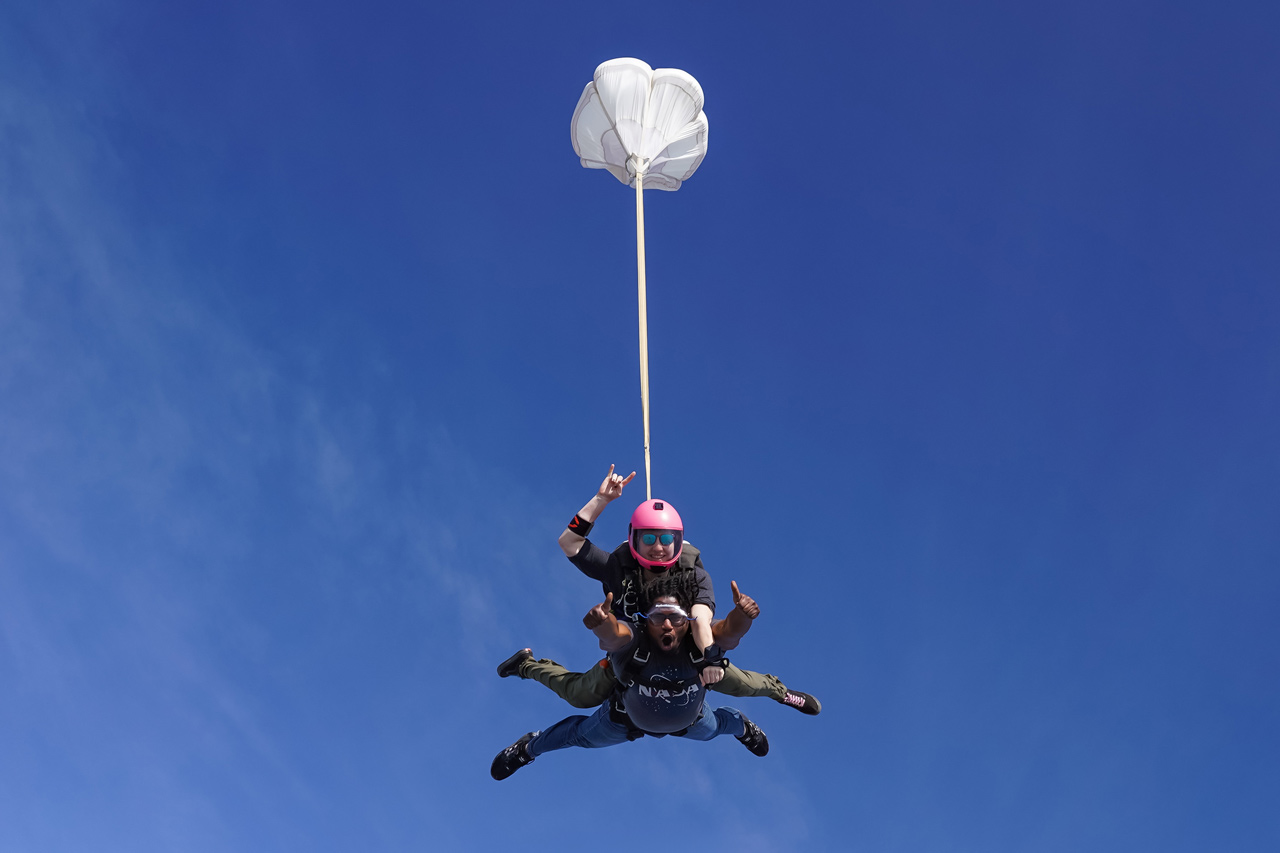
Additional Equipment for Tandem Skydivers:
- Drogue: The drogue is a nifty little parachute that your tandem instructor will deploy as soon as you stabilize from your initial jump out of the airplane. The drogue is designed to help slow the tandem pair to a more stable freefall speed to prevent injury on the main parachute deployment and damaging the main parachute in the process. The drogue also aids in stability, making it easier for the instructor and tandem student to maintain a solid, belly-to-earth flying orientation.
- Goggles: Googles are usually provided by the skydiving center of your choice for most if not all tandem skydives. They are designed to protect the eyes from the 120 mph wind speeds of freefall, and keeps any debris from blowing into your eyeballs.
- Optional Jumpsuit: While the jumpsuit is optional for first-time skydivers, it does a great job to protect your skin and clothing from debris, potential wind burn, and grass stains on landing!
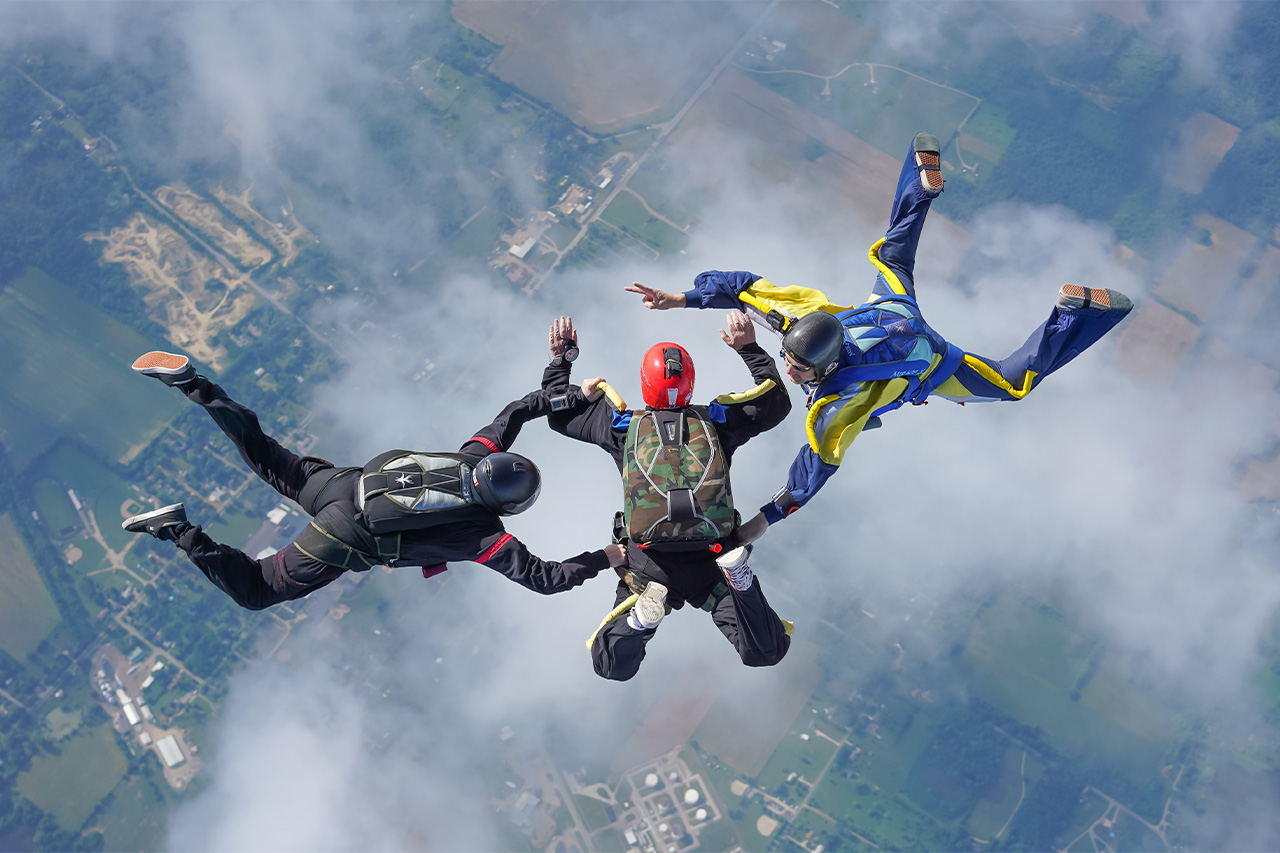
Additional Equipment for Student Skydivers:
- Jumpsuit: Not only is it the jumpsuit’s job to keep you comfortable, it also provides special grips for the instructor to hold onto and help stabilize you in freefall while you’re still learning.
- Open Face Helmet: Protecting your brain while skydiving is crucial. Facial expressions are important when learning and adhering to the instructor’s guidance. Freefall is very loud, and contrary to what Hollywood portrays, you cannot talk to each other in freefall. Therefore, we have to rely on hand signals and facial expressions to communicate. Open face helmets help give instructor’s a clearer view of your face.
- Goggles: Eye protection is always pertinent when on a skydive! If you’re wearing an open face helmet, you’ve got to have goggles to go along with it.
- Radio: Student skydivers will wear a radio attached to their helmets in order to receive instruction while landing their very own canopy. An instructor on the ground will guide the new skydiver on what to do for their landing pattern, practicing flares, and actually landing the parachute.
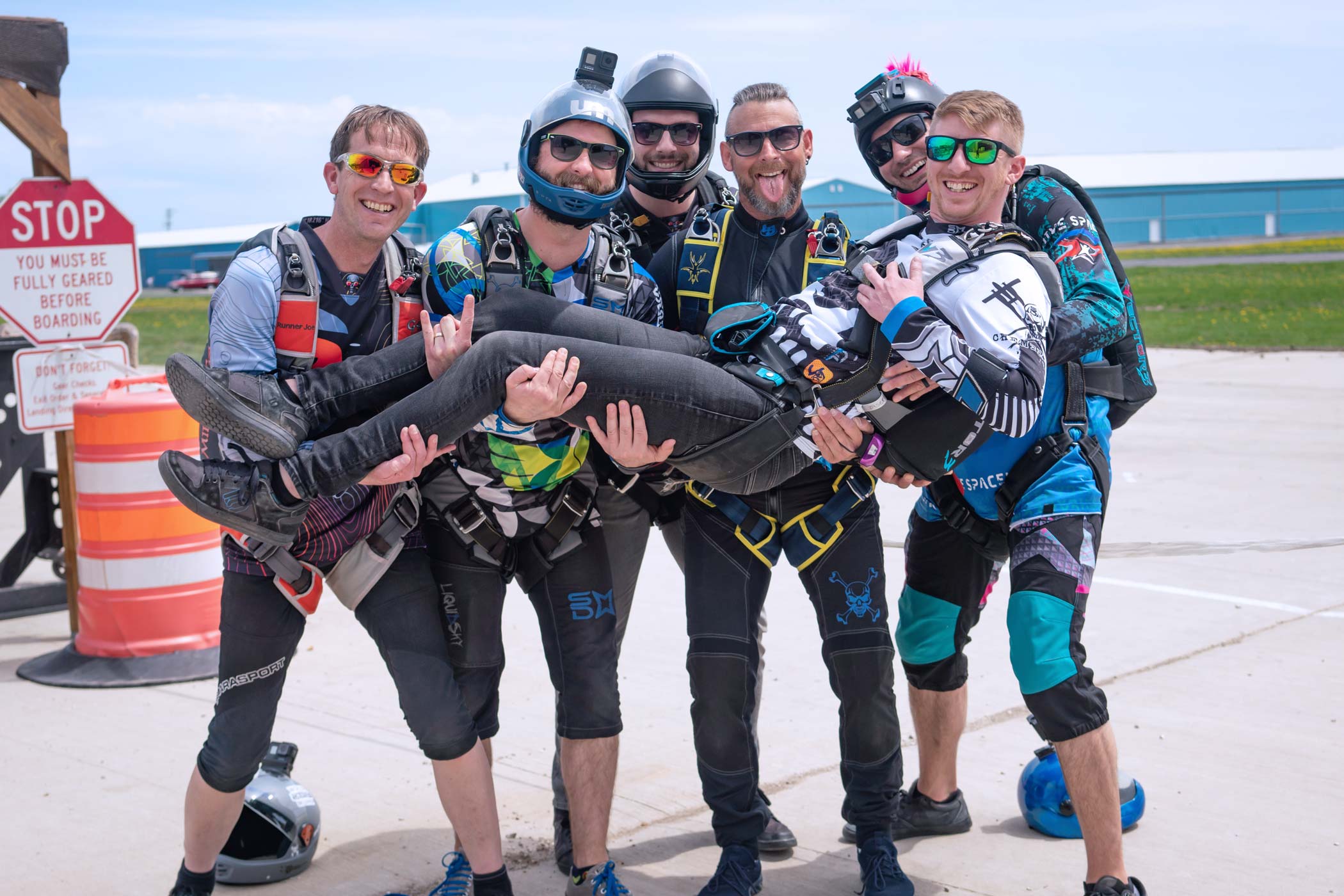
Optional Equipment for Licensed Skydivers:
- Jumpsuit: Licensed skydivers have the option to jump with a skydiving jumpsuit or in their regular “street” clothes. This is all based on preference, skill-level, or the type of jump that is being performed. Jumpsuits are often designed specific to the discipline and provide different lifts for each flying type; sleek jumpsuits for freeflying or jumpsuits with booties and grippers for relative work.
- Skydiving Helmet: Once a skydiver transitions from student to licensed, they have the option to choose the popular full face helmet with a built in face shield enclosure or an open face helmet. If the skydiver chooses the open face helmet, they would need to invest in a pair of skydiving goggles to protect the eyes.
- Audible Altimeter: The audible altimeter is worn inside the helmet and is responsible for emitting a tone at pre-set altitudes. Audible altimeters are used to ensure jumpers remain aware of their altitude during freefall and while under canopy. They are usually used by those who participate in advanced jumps such as canopy piloting, freeflying, and wingsuiting.
- Flysight: The Flysight is a GPS tracking device usually used by wingsuiters and canopy pilots. It logs data from their jump in order to track horizontal and vertical speed and review the jump as plot points on a graph after landing. The Flysight will even give off an audible tone when there is a change in glide ratio during the flight.
Skydiving Gear for Beginners: How to Choose the Right Gear
You might be wondering, “When should I buy my first skydiving rig?” The answer is all relative to your skydiving goals, how often are you wanting to jump, and what are you looking to achieve. Consider comparing the cost of renting skydiving gear from the dropzone versus purchasing your own skydiving gear.
How much does a full set of skydiving gear cost? If you’re a newer jumper and haven’t discovered it already, skydiving is an expensive hobby – and the expense is heavily focused on the cost of skydiving gear. However, the costs associated with skydiving gear is all dependent on what gear you choose! A used skydiving rig could cost anywhere between $6,000 to $7,500, while a brand-new setup could cost anywhere from $9,000 to $11,000. Gear is often available for purchase at dropzones, through skydiver gear sales Facebook pages, and Dropzone.com.
What Do You Need: First Time Skydiving
All you need to go skydiving for the first time is comfortable/athletic clothing and tennis shoes that are secure to your feet (no boots or heels) – the dropzone will provide the rest! After viewing the skydiving equipment list, you might have noticed that you do not wear a helmet for tandem skydiving. Why do tandem skydivers not wear helmets? Because it eliminates the potential for the tandem instructor to get knocked unconscious while on the skydive!
Ready to check out the parachute gear for yourself? Reach out to your local dropzone to schedule a skydive! Blue skies.
Categories:
DZ Locator
Find a skydiving center near you.

